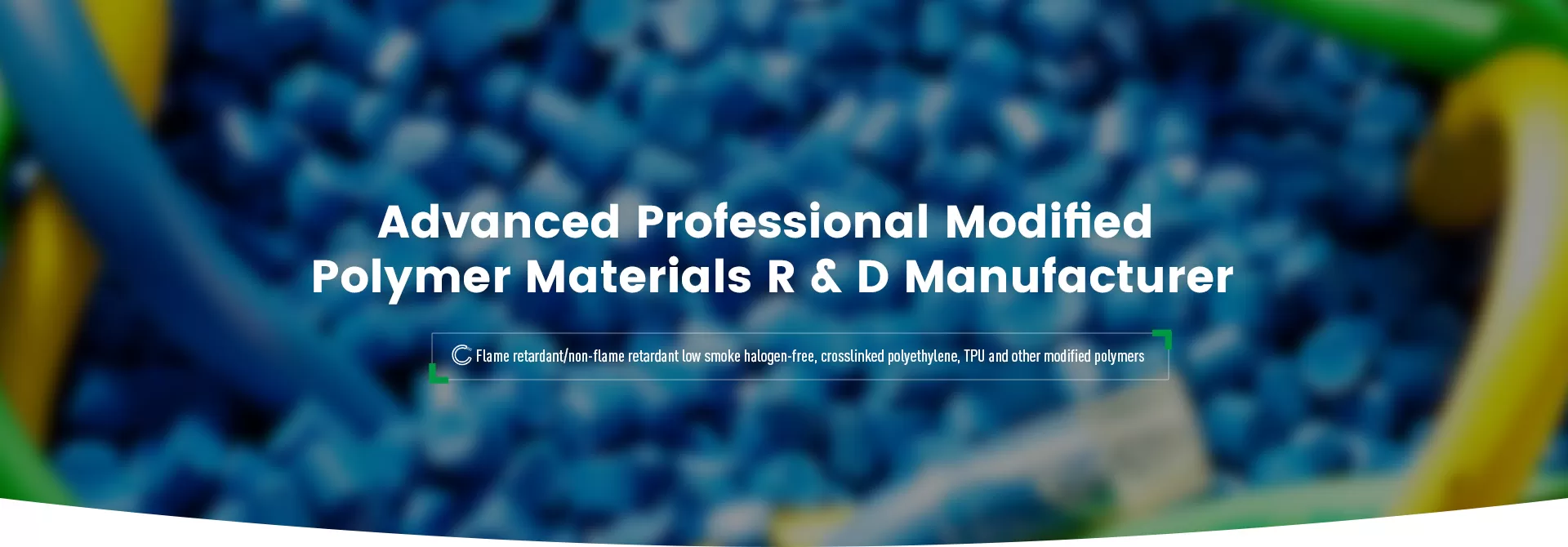
50% EVA+50% Sb₂O₃;
50% PE + 50% Sb₂O₃;
30% PVC powder + 20% plasticizer (TOTM) + 50% Sb₂O₃;
Flame retardant masterbatch can be customized according to customer requirements;
The antimony flame retardant masterbatch primarily utilizes antimony trioxide (Sb₂O₃) as its active constituent. It is produced via melt compounding, wherein Sb₂O₃ is uniformly dispersed into a polymeric carrier matrix such as polyethylene (PE), polypropylene (PP), or polystyrene (PS). This masterbatch functions as a synergistic flame retardant additive in polymeric systems, enhancing flame resistance when incorporated into thermoplastic materials.
The antimony functional masterbatch represents an advanced formulation derived from the basic antimony-based flame retardant system. It incorporates additional functional additives—such as anti-dripping agents (e.g., PTFE) and antioxidants—tailored to meet specific application requirements, thereby conferring multifunctional performance including thermal stability, mechanical integrity, and improved fire resistance.

Antimony Flame Retardant Masterbatch\Antimony Functional Masterbatch (Left), Sb₂O₃ (Right)
The brominated-antimony flame retardant masterbatch is a high-efficiency, environmentally friendly flame-retardant concentrate composed of brominated flame retardants (e.g., decabromodiphenyl ethane), antimony trioxide (Sb₂O₃) as a flame retardant synergist, and various auxiliary additives. The polymeric carrier may include ethylene-vinyl acetate (EVA), polypropylene (PP), polyethylene (PE), or polyamide (PA).
This compound is manufactured through a twin-screw extrusion process involving low-temperature plasticization and high-shear dispersion, following prior surface activation of the flame retardant components to enhance interfacial compatibility and dispersion efficiency.
The formulation complies with European Union environmental and safety directives (e.g., RoHS, REACH), and is categorized as a low-emission, non-dusting flame retardant solution. It streamlines production by eliminating direct powder handling, thus significantly reducing airborne particulate exposure and enhancing occupational safety.
Enables single-pass processing with negligible material loss, leading to reduced raw material consumption and overall cost savings.
Exhibits excellent dispersion within the polymer matrix, resulting in enhanced flame retardant performance. Maintains mechanical properties and thermal stability, even after multiple processing cycles.
Designed for additive dosage equivalence with conventional powder-based flame retardant systems, facilitating seamless substitution in existing formulations.
| Typical Properties | |||
| Property | Test Method | Typical Value | Unit |
| Appearance | Visual | White to off-white pellets | — |
| Carrier Resin | — | EVA / PP / PE / PA | — |
| Bromine Content | Combustion Analysis | 60 ± 2 | wt% |
| Sb₂O₃ Content | TGA or XRF | 20 ± 2 | wt% |
| Bulk Density | ASTM D1895 | ~1.5 | g/cm^3 |
| Melt Flow Index (190℃/2.16kg) | ASTM D1238 | 2–10 | g/10 min |
| Moisture Content | ASTM D6980 | <0.3 | wt% |
| Recommended Dosage | — | 10–25 | wt% in polymer |
| Flame Retardancy (UL-94) | UL-94 | V-0 (Depending on Base Resin) | — |
Note:
The values above are typical and not intended as product specifications. Performance may vary depending on base polymer and processing conditions.
Quality Indicators
| Item | Materials/Typical Values |
| Grade | LG-361/LG-361+/LG-361P/LG-36A |
| Carrier | PE/PP/EVA |
| Appearance | White Granular |
| Flame Retardant Content(%) | 85 |
| Sb₂O₃(%) | 21.25 ± 1 |
| DBDPE(%) | 63.75 ± 1 |
| Pb(%) | ≤0.01 |
| As(%) | ≤0.04 |
| Specific Gravity(g/cm^3) | 2.0–2.5 |
| Water(%) | ≤0.2 |
| Melting Point(℃) | <140 |
| Decomposition Temp(℃) | >300 |
| Recommended Dosage For PP(UL-94\V-0) | 28–35% |
Note: Flame retardant masterbatches with different contents and carriers can be provided according to customer needs
■ Application range
Flame retardant of engineering plastics such as PE, PP, EVA, ABS, and wires and cables, pipes, and sheets.
Application Examples
| LG-361+ Application Test | ||||
| Application | Application in PE | Application in PP | ||
| Material | Ref. Group | Sample Group | Ref. Group | Sample Group |
| PE/6201 | 90 | 90 | \ | \ |
| PP/6012 | \ | \ | 47 | 47 |
| Glass Fiber | \ | \ | 22 | 22 |
| DBDPE | 6.75 | \ | 22.5 | \ |
| Sb₂O₃ | 2.25 | \ | 7.5 | \ |
| LG-361+ | \ | 9 | \ | 30 |
| Other Additive | 1 | 1 | 1 | 1 |
| Performance Testing | ||||||
| Performance Indicators | Test Method | Unit | Application to PE | Application to PP | ||
| Ref. Group | Sample Group | Ref. Group | Sample Group | |||
| Flame Retardant Rating | UL-94 | - | V-0 | V-0 | V-0 | V-0 |
| Tensile Strength | ASTM-D638 | MPa | 8.42 | 8.14 | 27.42 | 29.64 |
| Elongation at Break | ASTM-D638 | % | 93.08 | 107.8 | 2.36 | 3.51 |
| Bending Strength | ASTM-D790 | MPa | \ | \ | 42.08 | 43.09 |
| Flexural Modulus | ASTM-D790 | MPa | \ | \ | 4047.13 | 4275.41 |
| Notched Impact Strength | ASTM-D256 | J/m | 28.81 | 35.24 | 14.1 | 14.2 |
| Non-Notch Impact Strength | ASTM-D4812 | J/m | \ | \ | 40.16 | 43.7 |